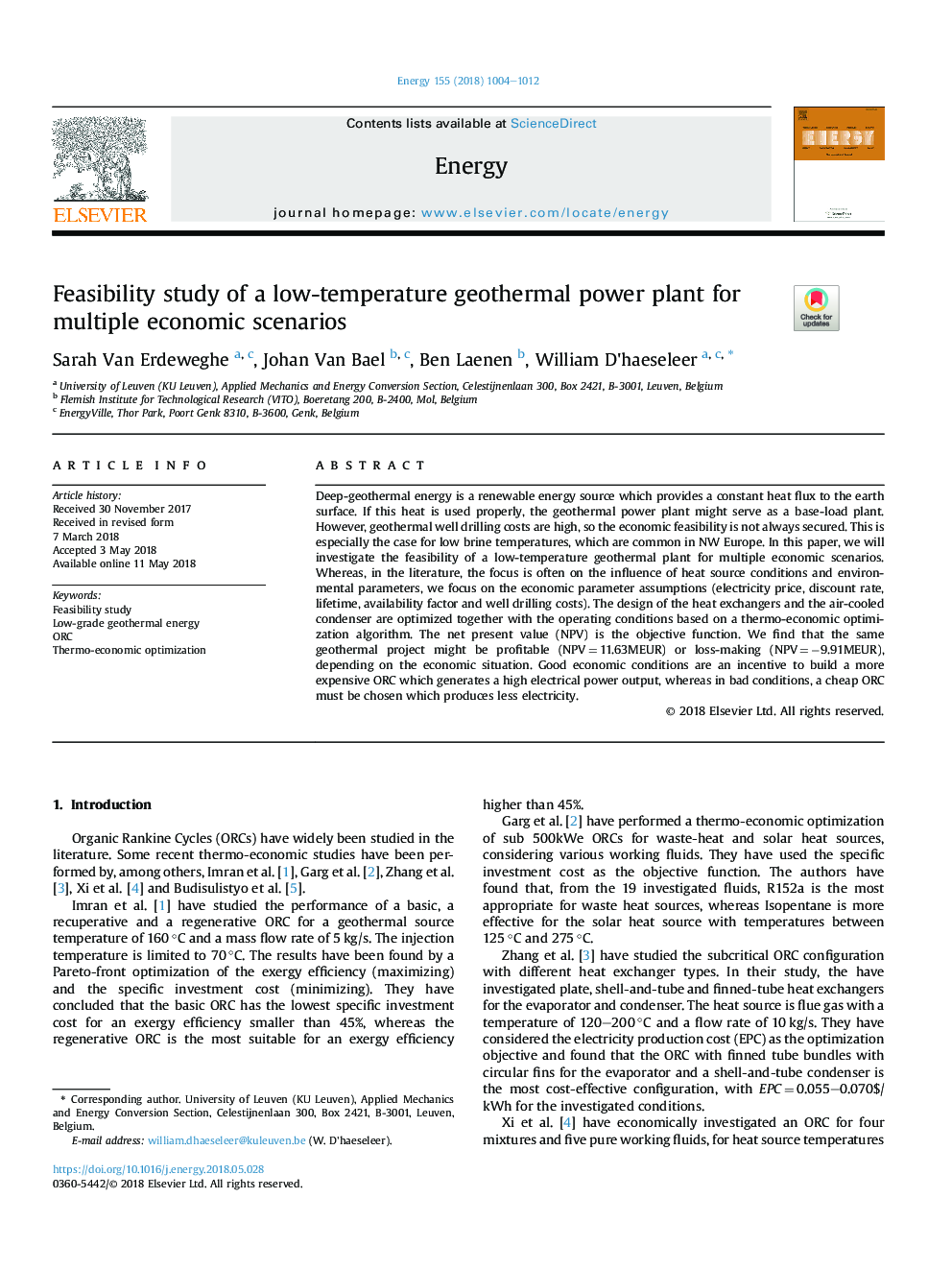| Article ID | Journal | Published Year | Pages | File Type |
|---|---|---|---|---|
| 8071531 | Energy | 2018 | 9 Pages |
Abstract
Deep-geothermal energy is a renewable energy source which provides a constant heat flux to the earth surface. If this heat is used properly, the geothermal power plant might serve as a base-load plant. However, geothermal well drilling costs are high, so the economic feasibility is not always secured. This is especially the case for low brine temperatures, which are common in NW Europe. In this paper, we will investigate the feasibility of a low-temperature geothermal plant for multiple economic scenarios. Whereas, in the literature, the focus is often on the influence of heat source conditions and environmental parameters, we focus on the economic parameter assumptions (electricity price, discount rate, lifetime, availability factor and well drilling costs). The design of the heat exchangers and the air-cooled condenser are optimized together with the operating conditions based on a thermo-economic optimization algorithm. The net present value (NPV) is the objective function. We find that the same geothermal project might be profitable (NPVâ¯=â¯11.63MEUR) or loss-making (NPVâ¯=â¯â9.91MEUR), depending on the economic situation. Good economic conditions are an incentive to build a more expensive ORC which generates a high electrical power output, whereas in bad conditions, a cheap ORC must be chosen which produces less electricity.
Related Topics
Physical Sciences and Engineering
Energy
Energy (General)
Authors
Sarah Van Erdeweghe, Johan Van Bael, Ben Laenen, William D'haeseleer,
